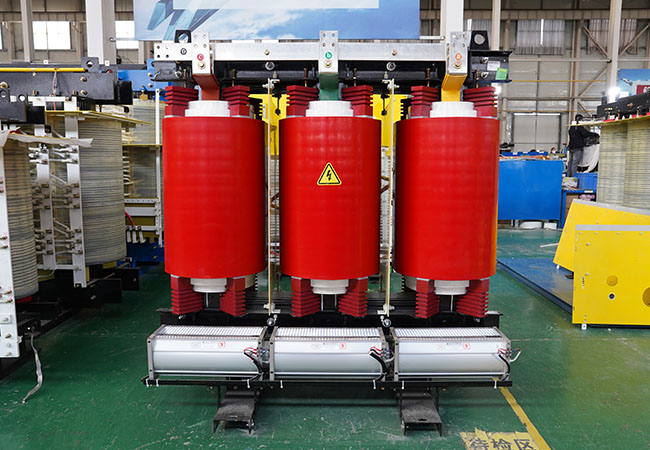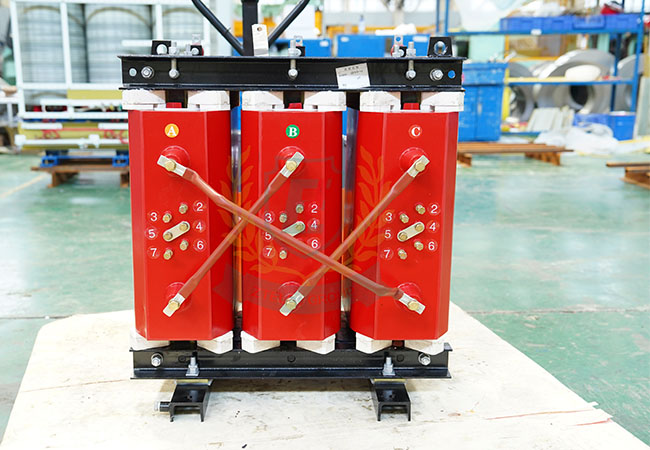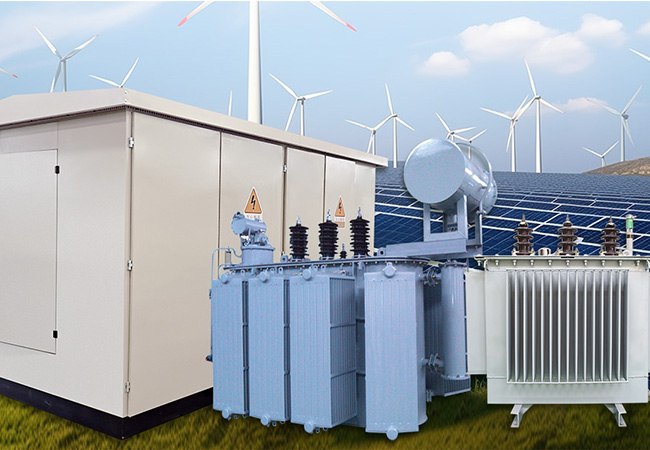Classification of Dry-Type Transformers
08-19 2024 | By:
We know that dry-type transformers are transformers composed of iron cores, coils, etc., and are generally used in power transmission, industrial power supply and other occasions. So what are the general classifications of dry-type transformers?
1. Classification by transformer capacity
(1) Small transformers: voltage below 10KV, capacity between 1 and 500KVA.
(2) Small and medium-sized transformers: voltage between 35kV and below, capacity between 630 and 6300kVA.
(3) Large transformers: voltage between 110kV and below, capacity between 8000 and 63000kVA.
(4) Extra-large transformers: voltage between 220kV and above, capacity between 90000KVA is called a large transformer.
2. Classification by transformer use
(1) Power transformers: used for step-up, step-down, distribution and communication of power transmission and distribution systems, or specially used for self-use transformers in power plants and substations.
(2) Instrument transformers: such as voltage transformers, current transformers, used for measuring instruments and relay protection devices.
(3) Power transformer: used for control power, lighting, and indication of general mechanical equipment.
(4) Electronic transformer: used in electronic circuits such as switching power supply, audio, pulse, impedance matching, etc.
(5) Test transformer: can generate high voltage and perform high voltage test on electrical equipment.
(6) Special transformer: such as electric furnace transformer, rectifier transformer, voltage regulating transformer, etc.
3. Classification by the number of phases of transformer winding
(1) Single-phase transformer: used for single-phase load and three-phase transformer group.
(2) Three-phase transformer: used for voltage increase and decrease in three-phase system.
(3) Multi-phase transformer: mostly used in rectifier transformer.
4. Classification by transformer cooling form
(1) Dry-type transformer: relies on air convection for cooling, generally used for small-capacity transformers such as local lighting and electronic circuits.
(2) Oil-immersed transformer: relies on oil as cooling medium, such as oil-immersed self-cooling, oil-immersed air cooling, oil-immersed water cooling, forced oil circulation, etc.
5. Classification by transformer winding connection form
(1) Double-winding transformer: used to connect two voltage levels in the power system.
(2) Three-winding transformer: generally used in regional substations of power systems, connecting three voltage levels.
(3) Autotransformer: primary and secondary windings are combined into one, used to connect power systems of different voltages. It can also be used as an ordinary step-up or step-down transformer.
(4) Multi-winding transformer: split transformer, the low-voltage winding of the transformer is split into two or three parts, which are not electrically connected to each other.
6. Classification by transformer core form
(1) Core transformer: such as mouth-type plug-in transformer, C-type transformer, R-type transformer.
(2) Toroidal transformer: such as contact voltage regulator, etc.
(3) Amorphous alloy transformer: also called energy-saving transformer, amorphous alloy core transformer uses a new type of magnetic conductive material, and the no-load current drops by about 80%. It is currently the most ideal distribution transformer for energy saving, especially suitable for rural power grids and developing areas with low load rates.
(4) Shell transformer: special transformer used for large currents, such as electric furnace transformers, welding transformers; or power transformers for electronic instruments, televisions, radios, etc.
7. Classification by transformer operating frequency
(1) Industrial frequency transformer: its operating frequency is 50Hz or 60Hz.
(2) Medium frequency transformer: its operating frequency is 400~1000Hz.
(3) Audio transformer: its operating frequency is 20Hz~20kHz.
(4) Super audio transformer: its operating frequency is above 20kHz, generally not exceeding 100kHz.
(5) High frequency transformer: its operating frequency is above 20Hz~100kHz.
8. Classification by transformer moisture-proofing method
(1) Open transformer
(2) Sealed transformer
(3) Resin encapsulated transformer
You may also find these interesting:


